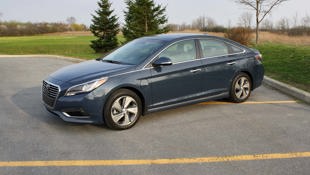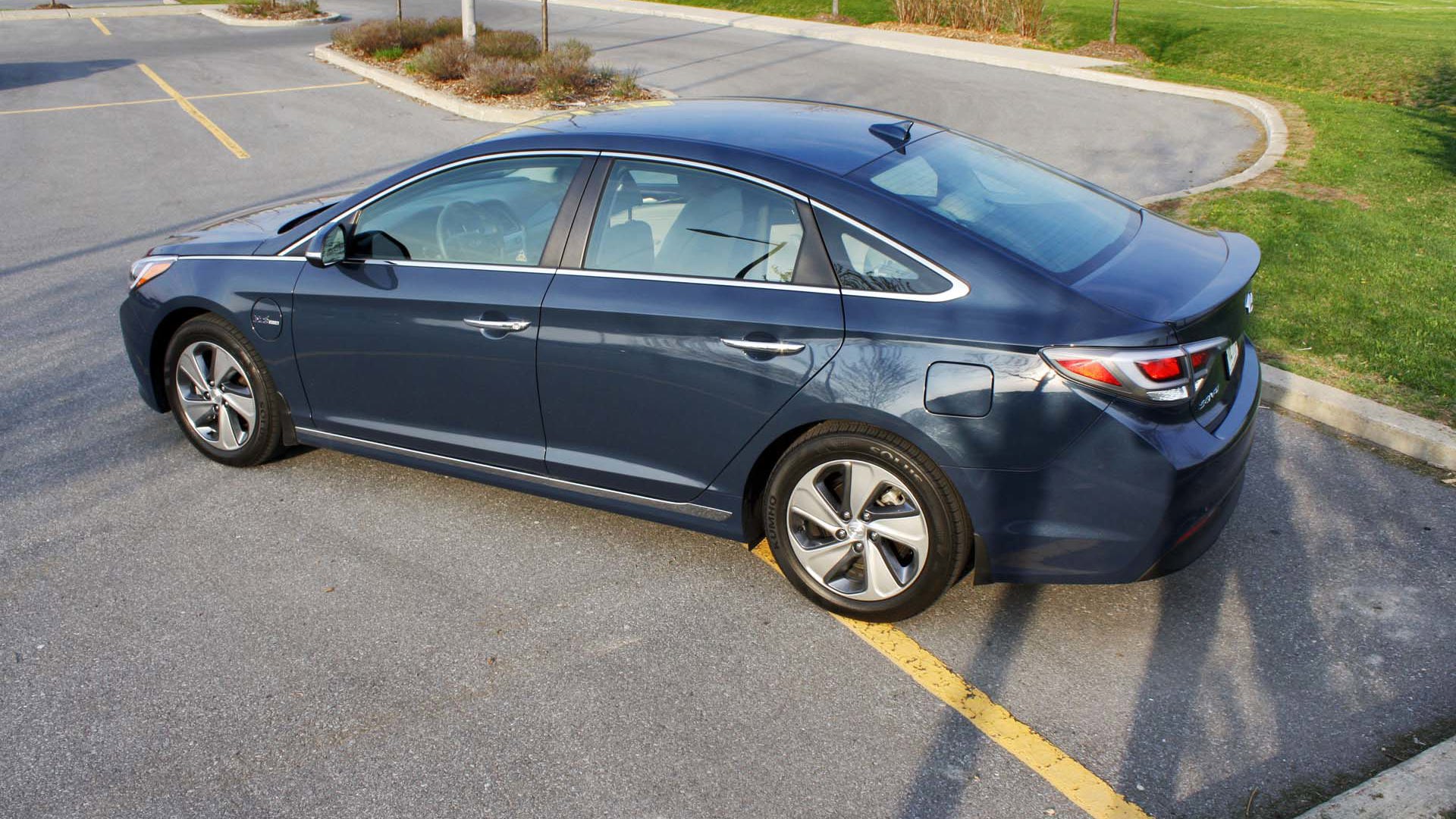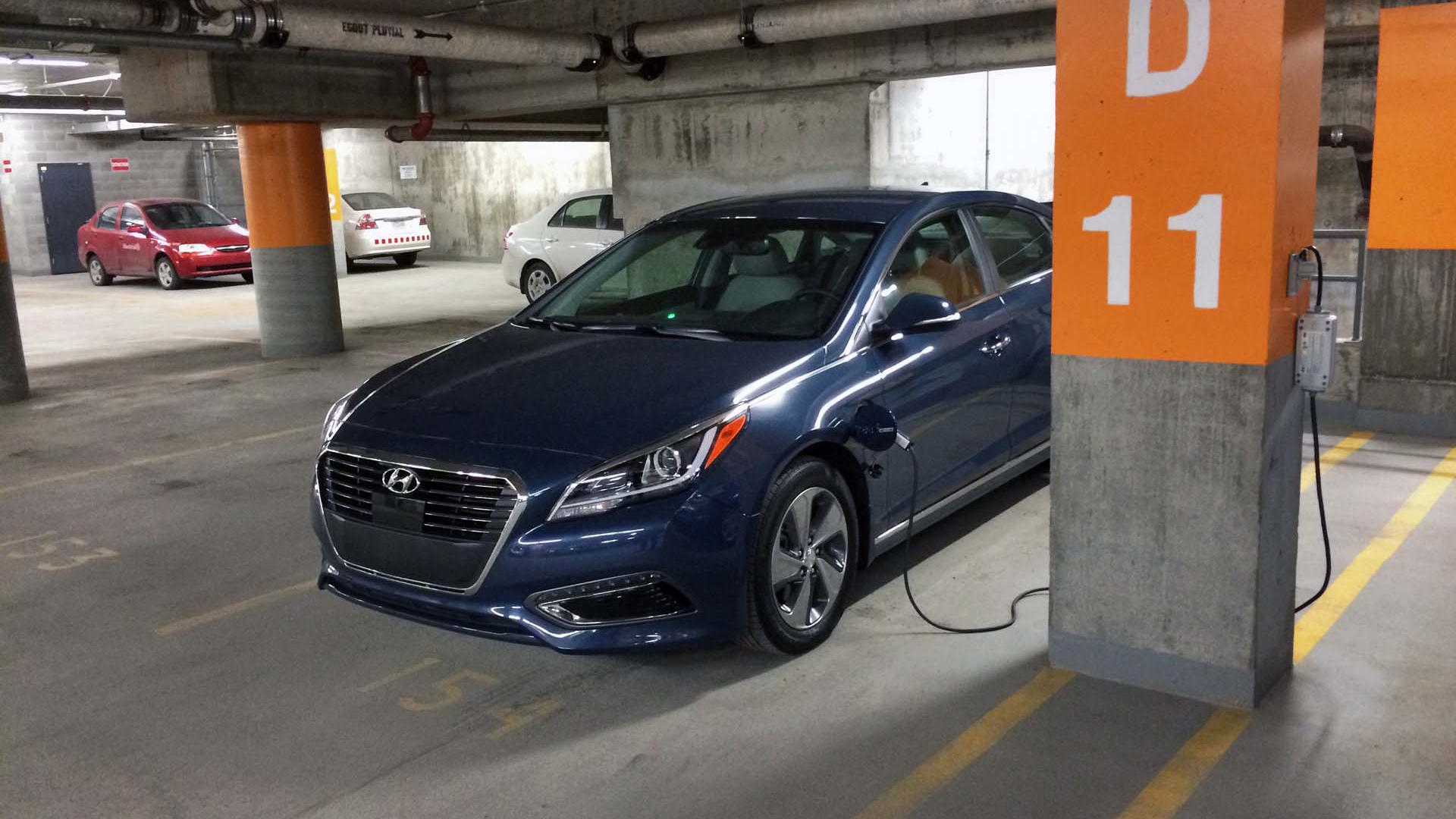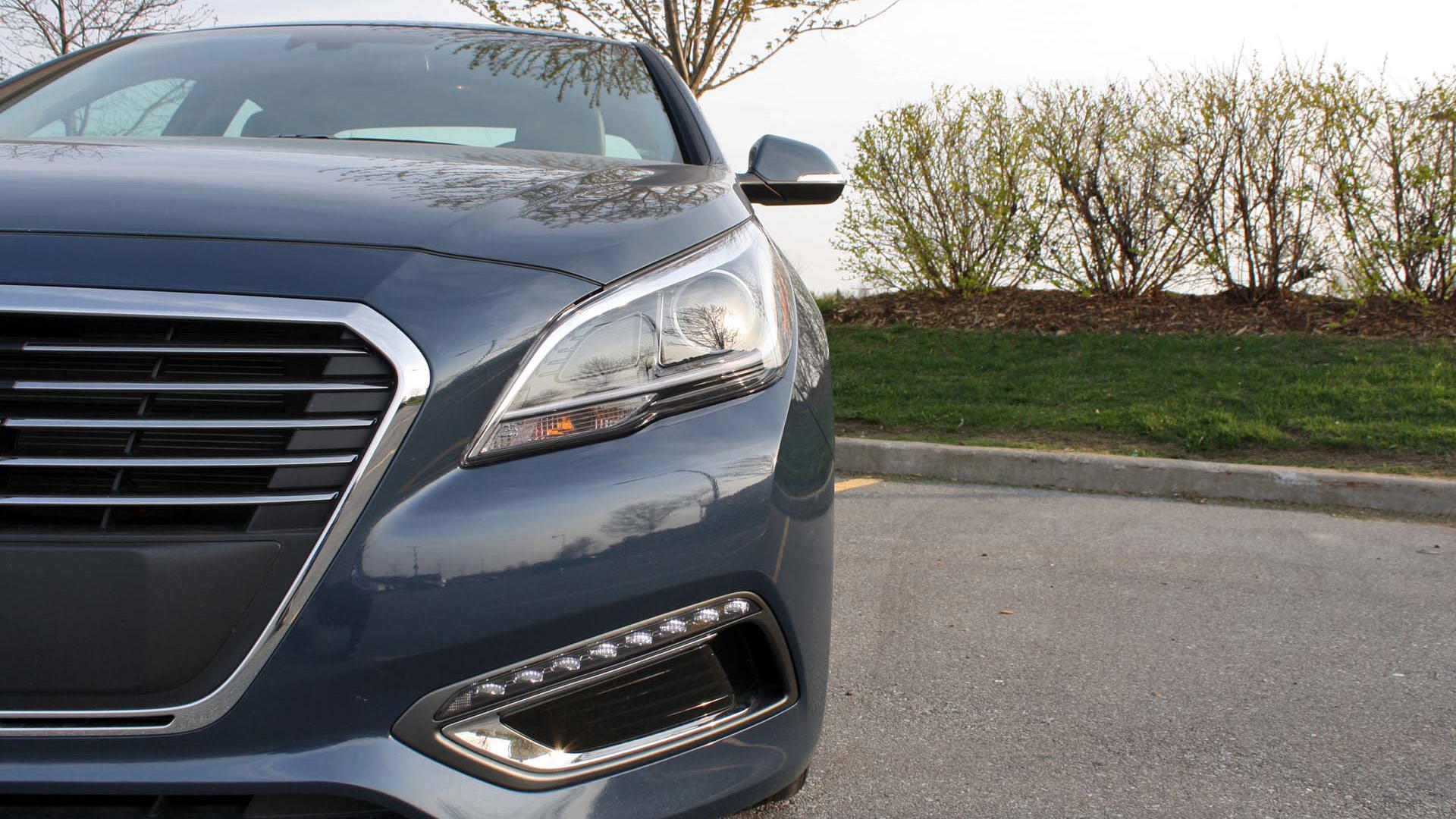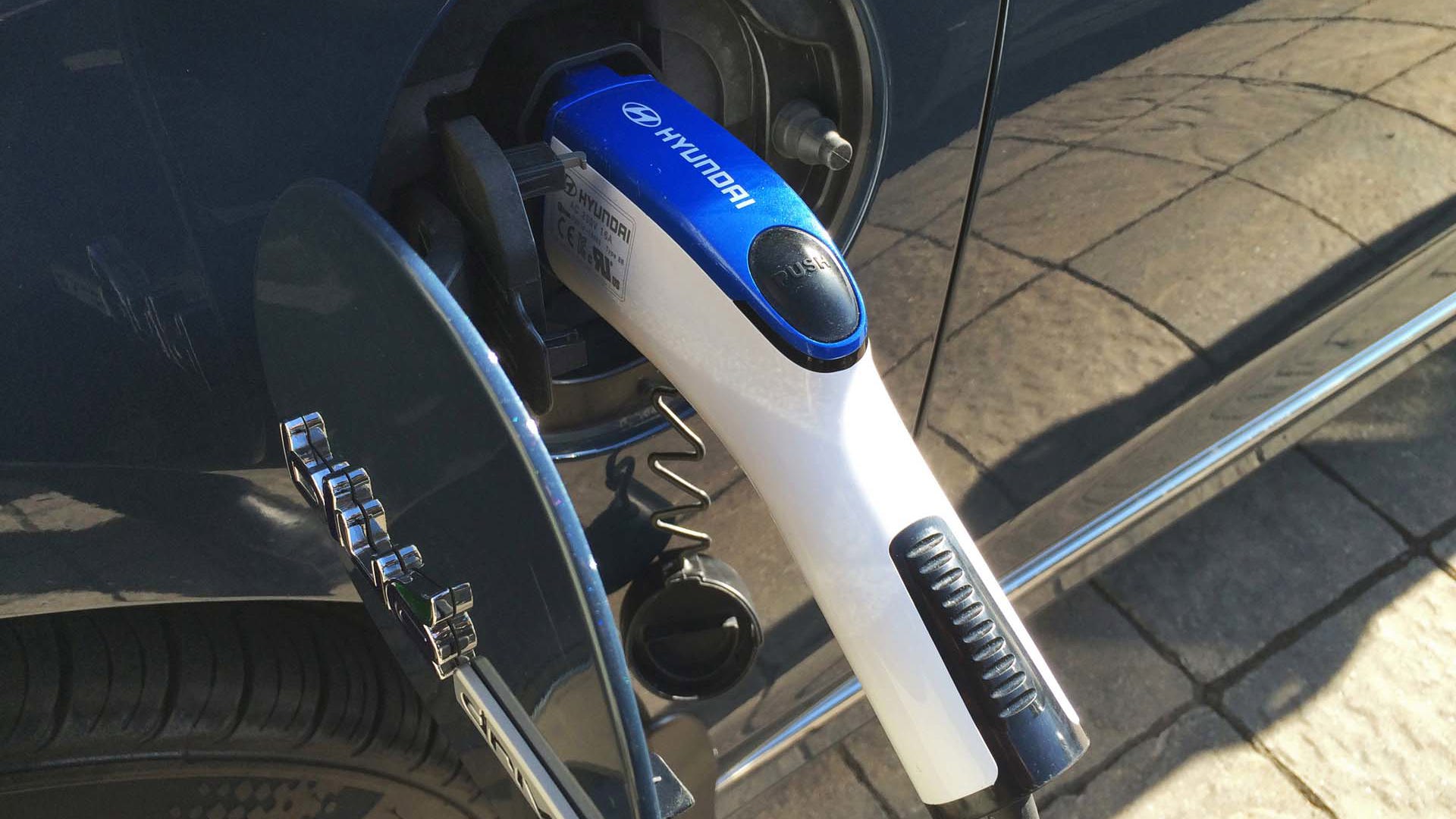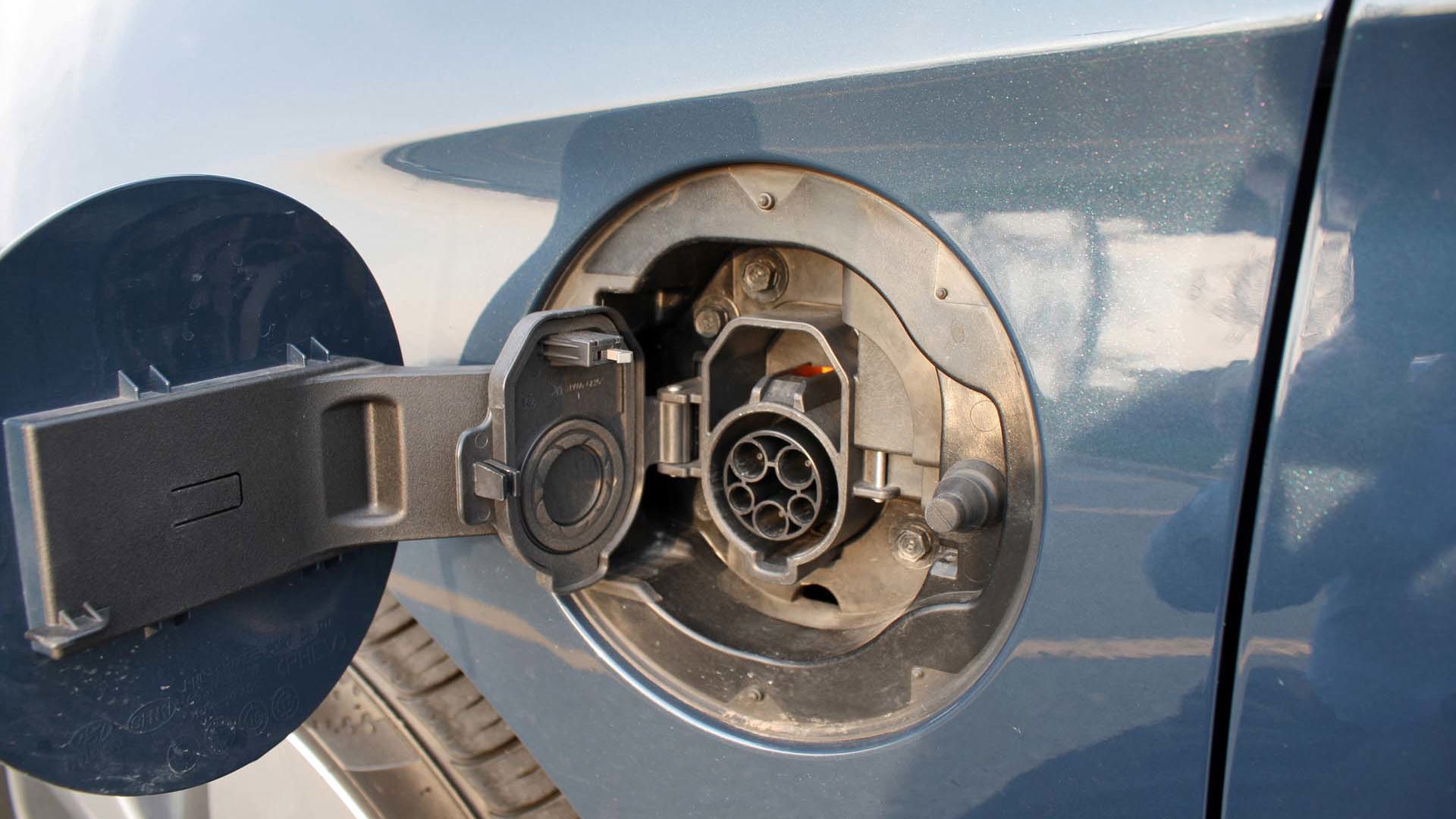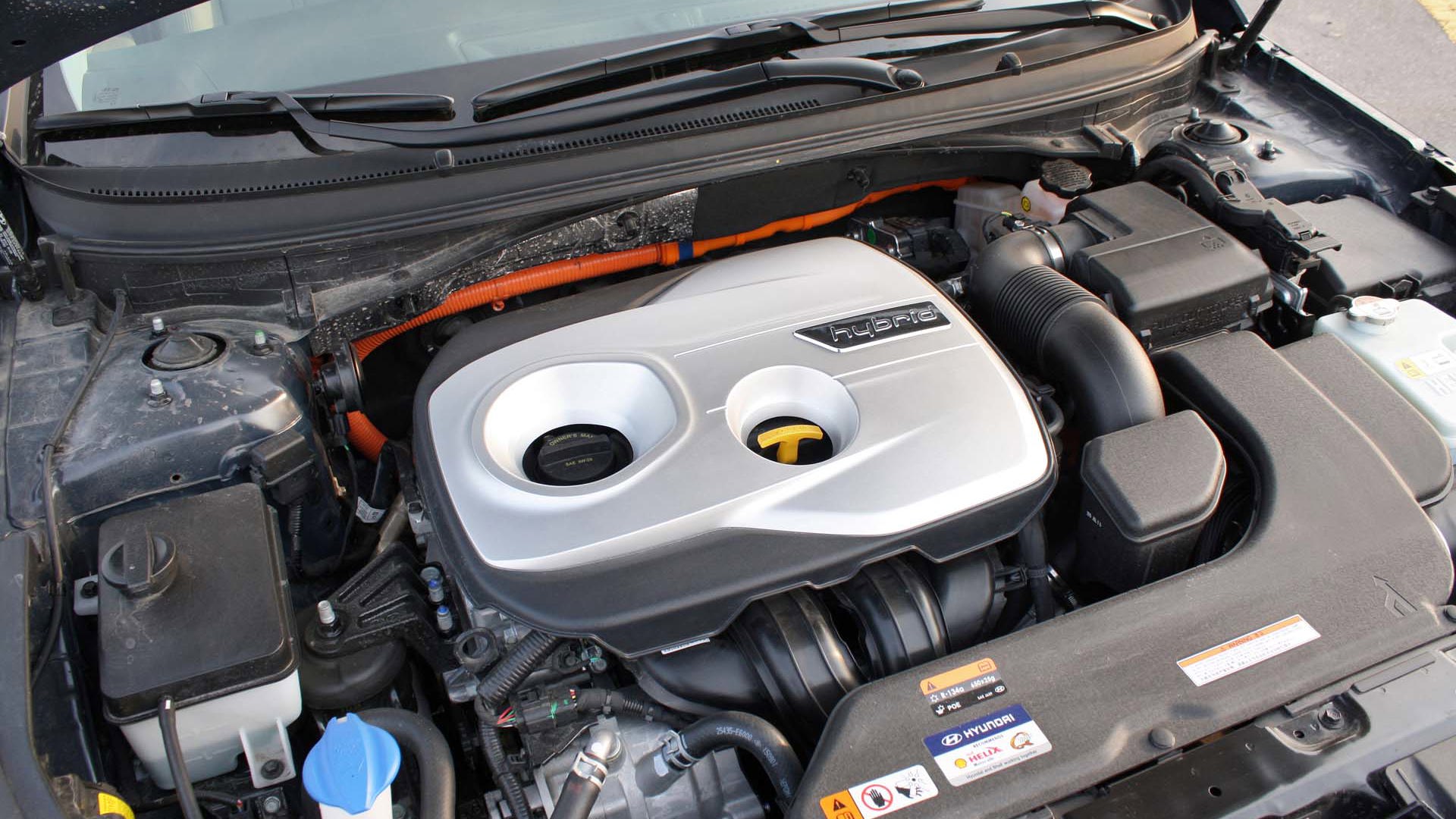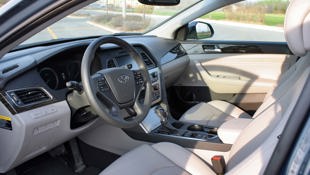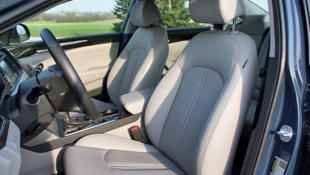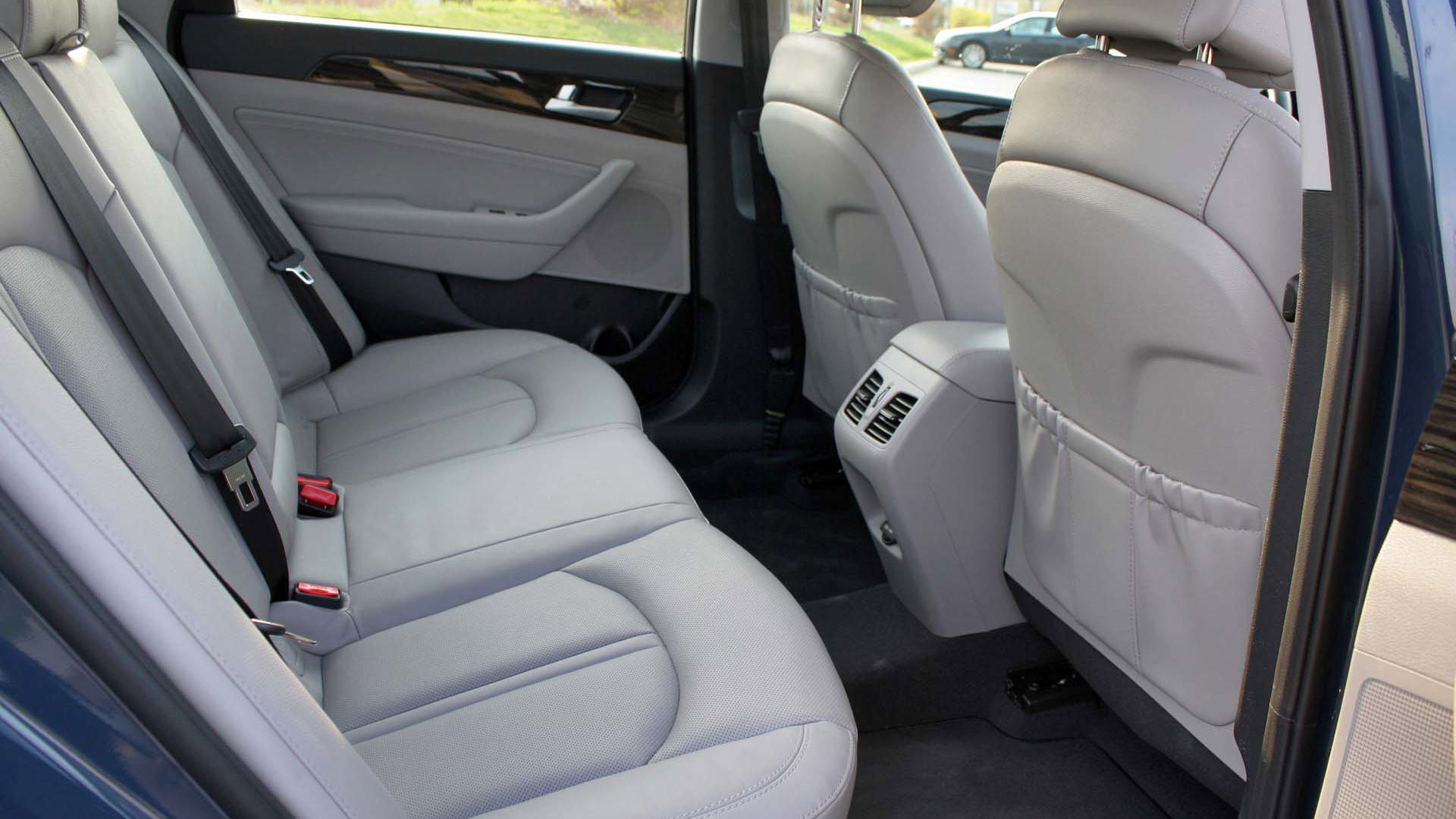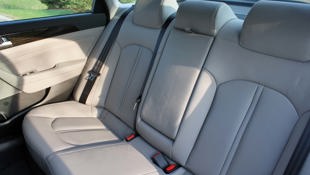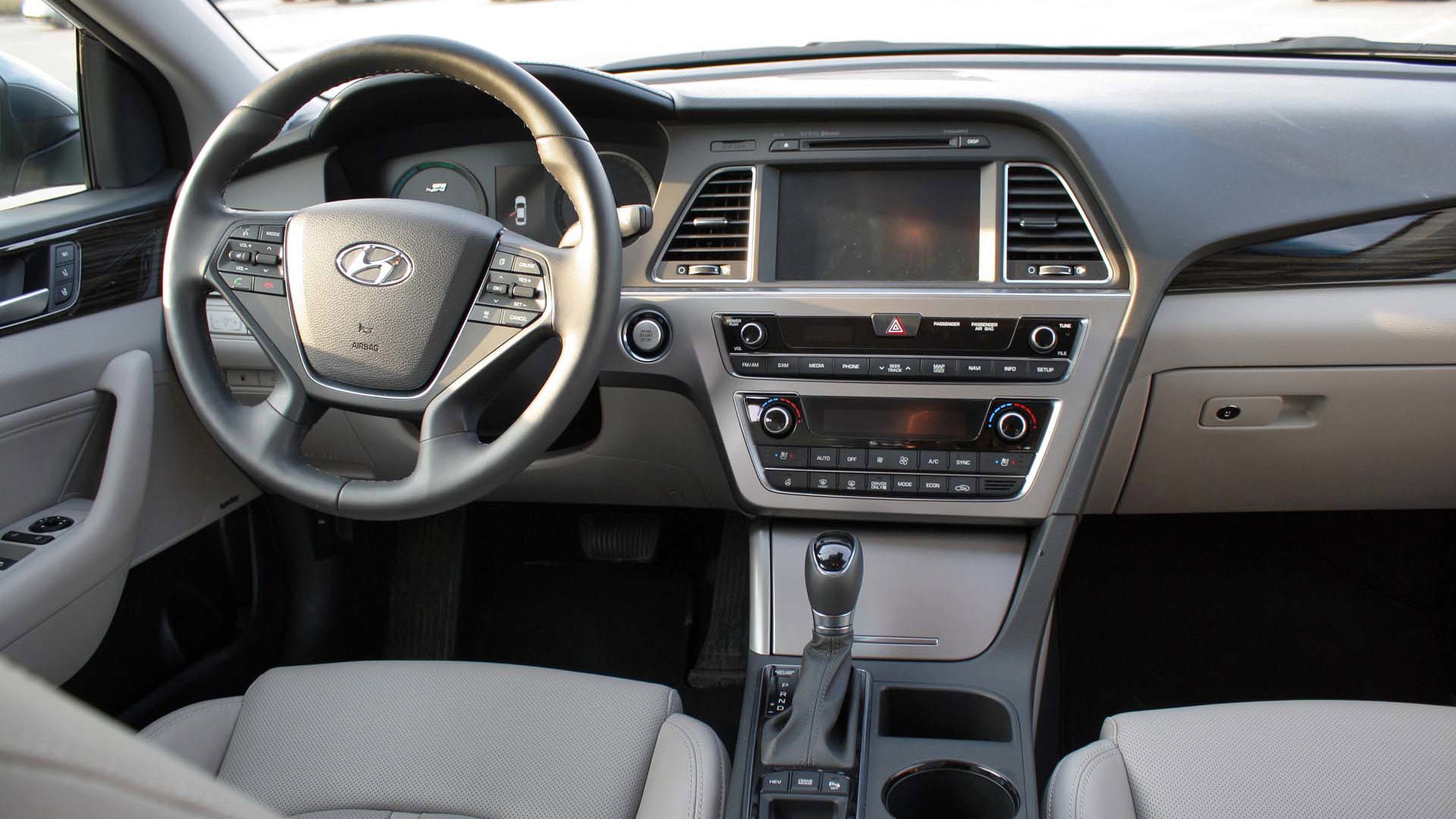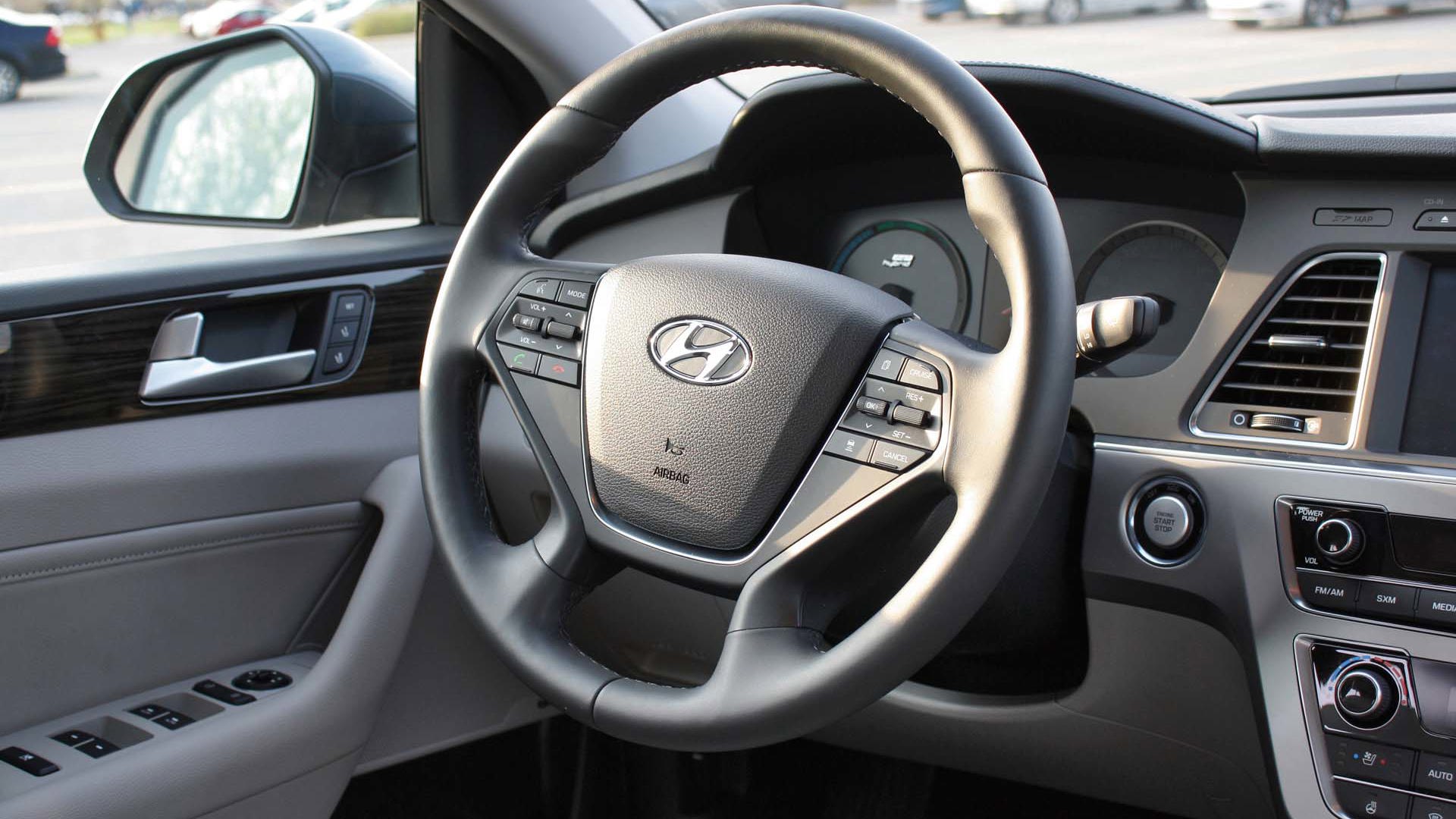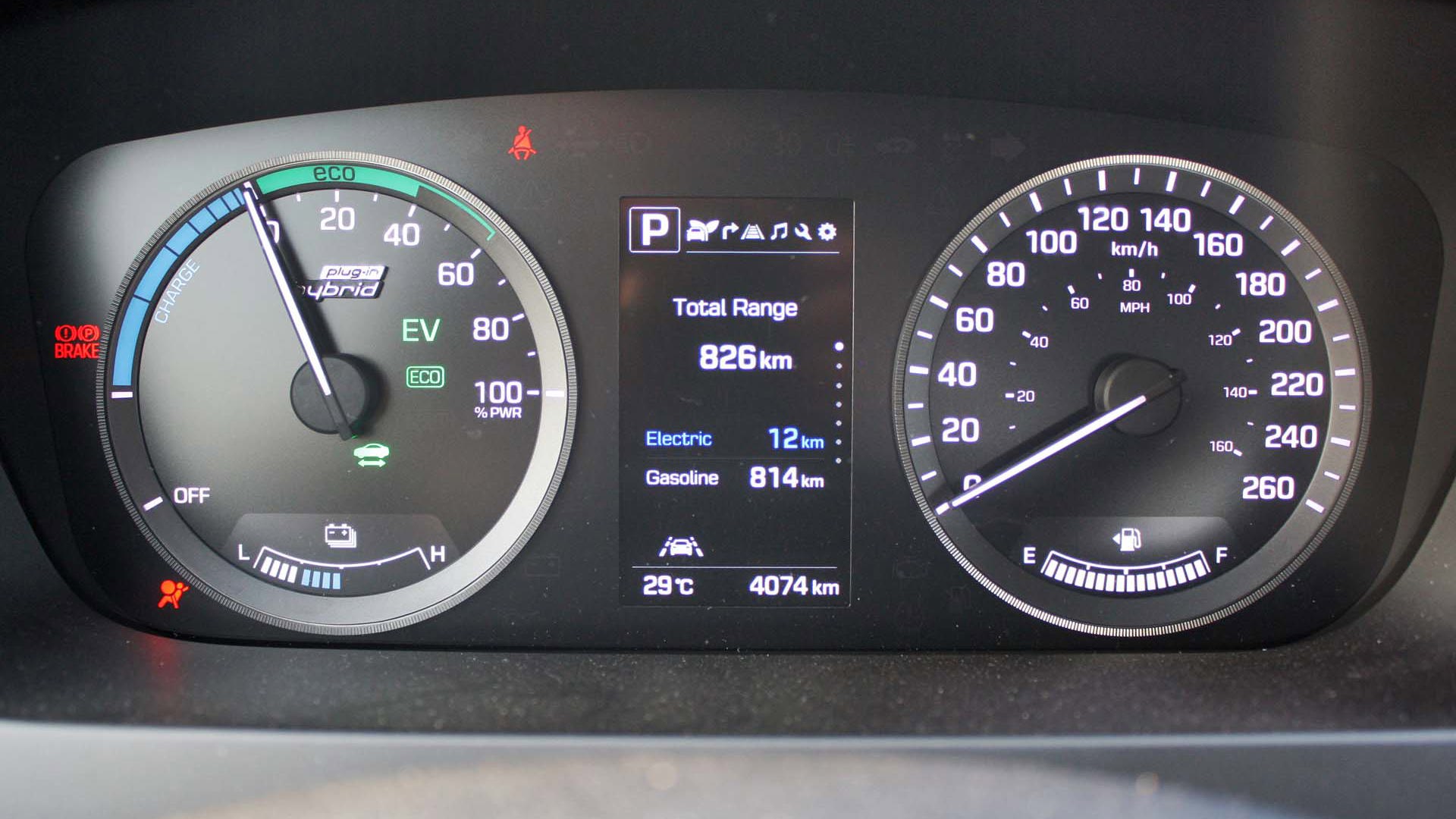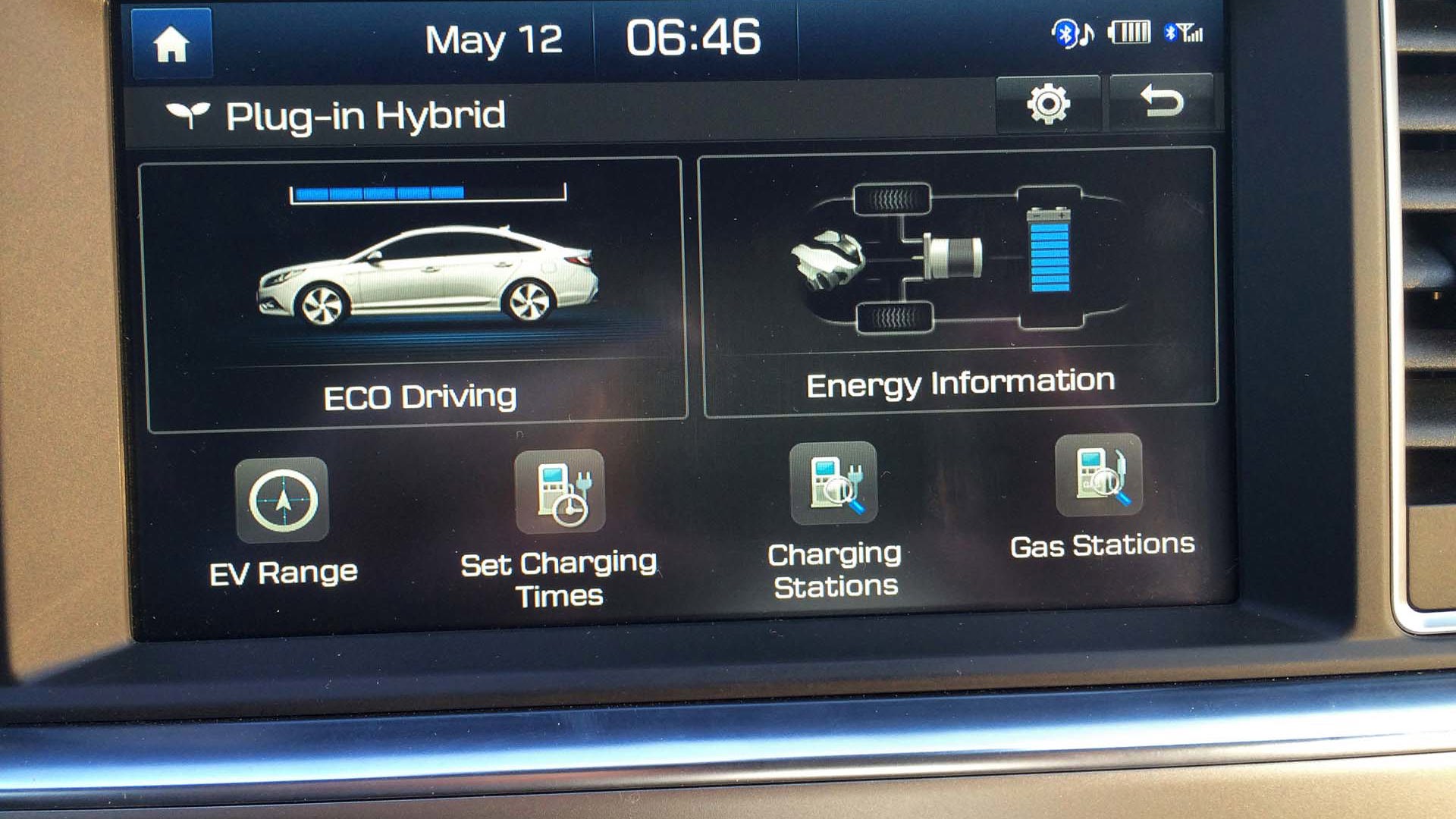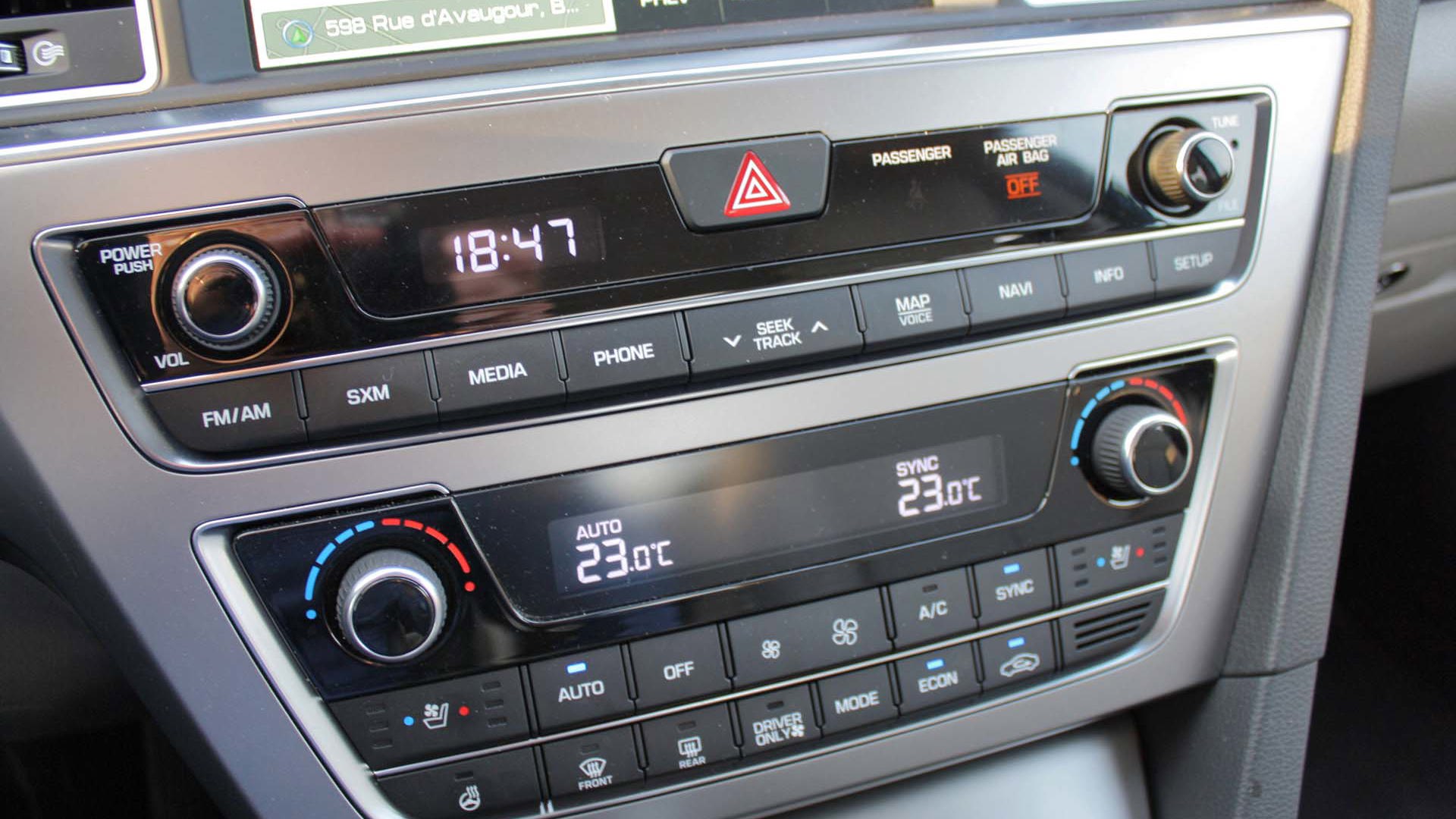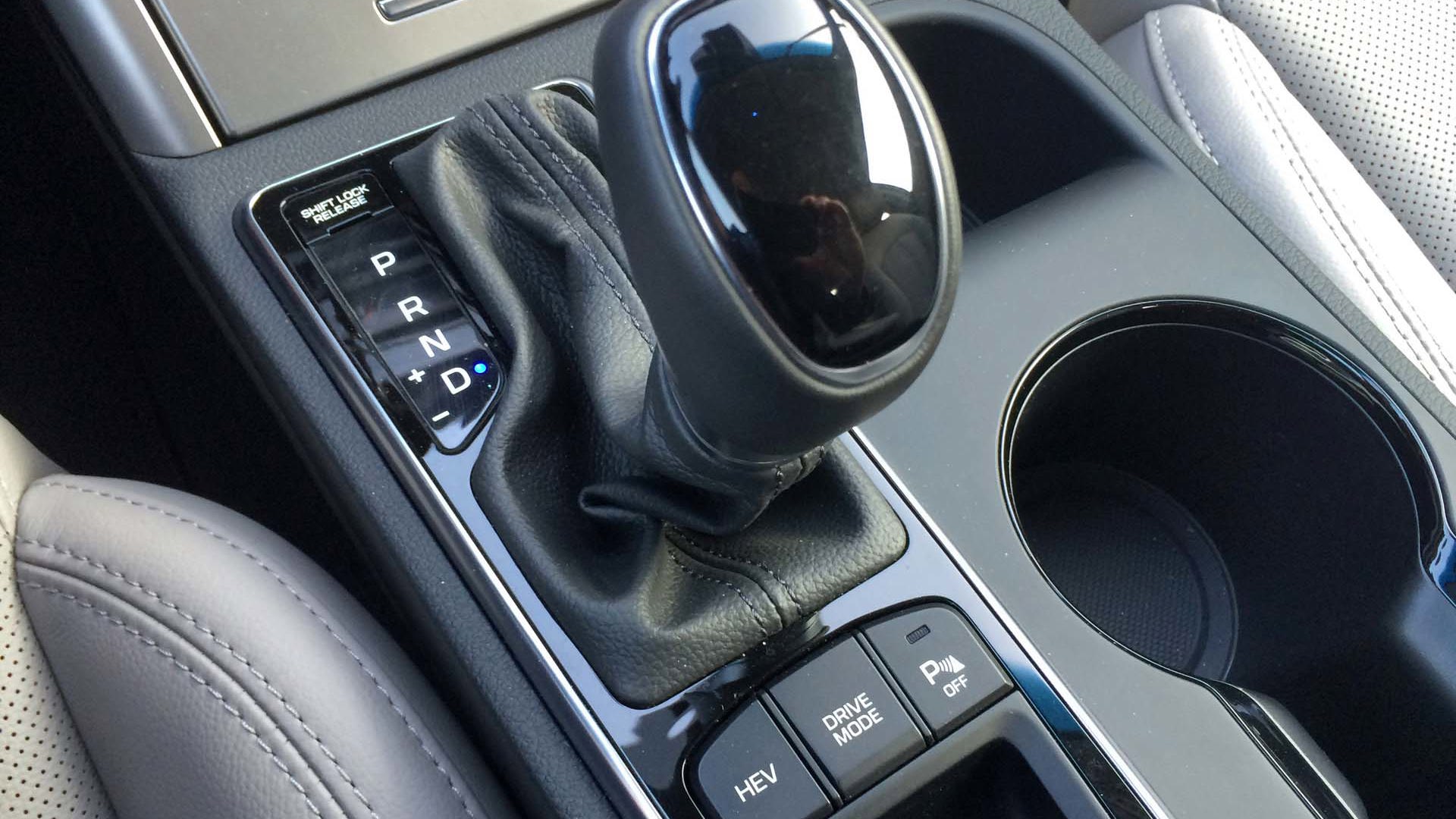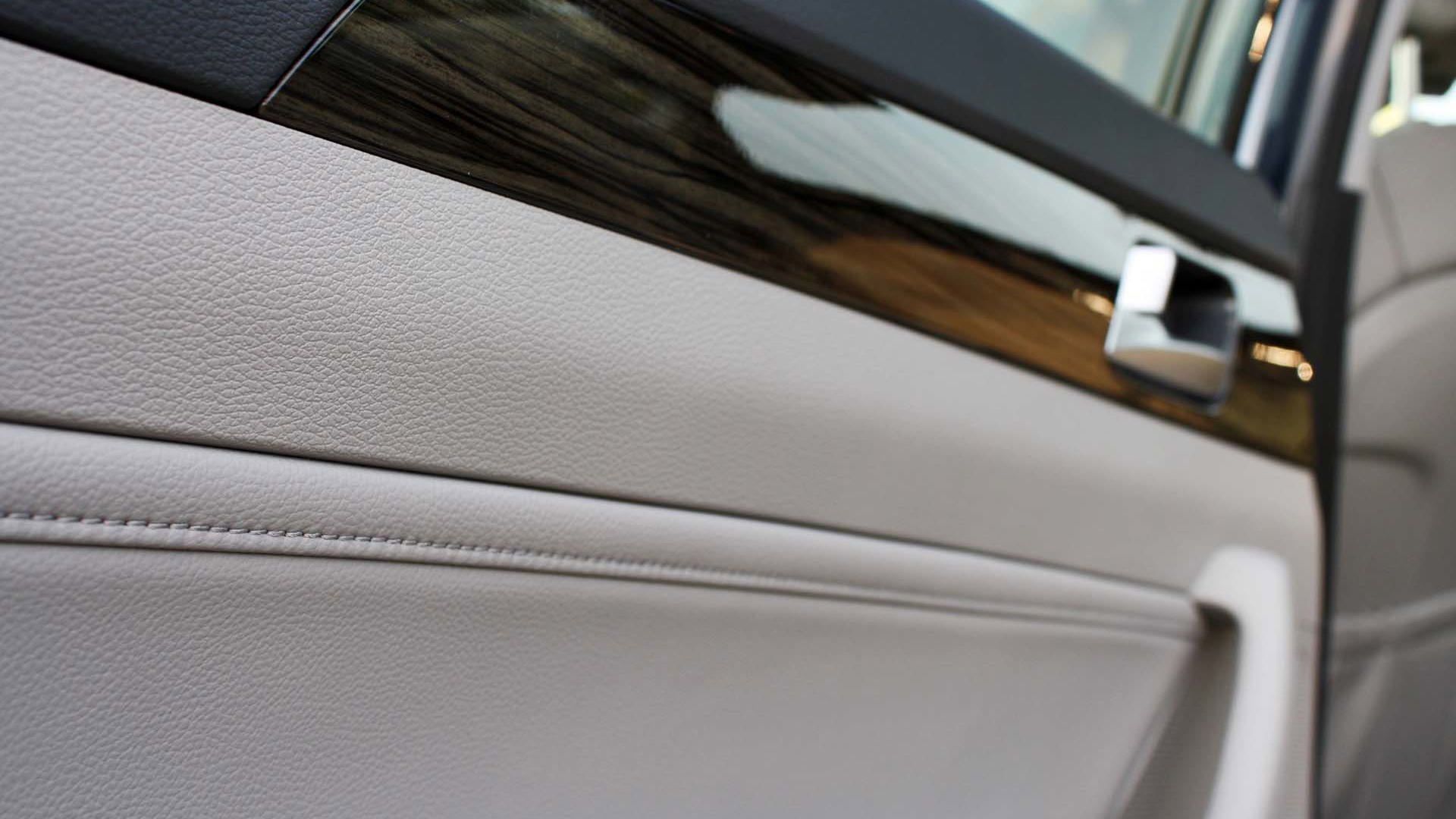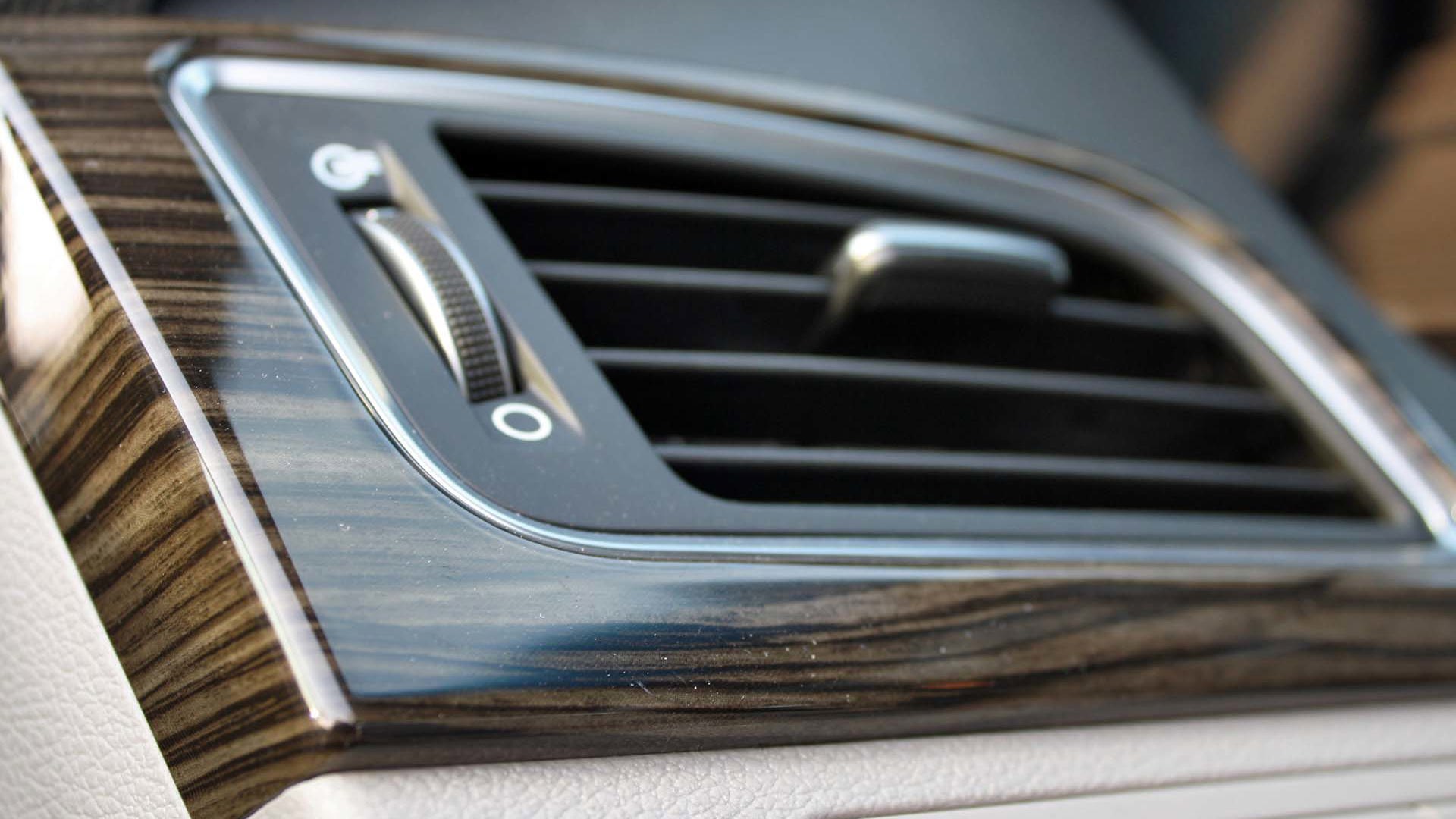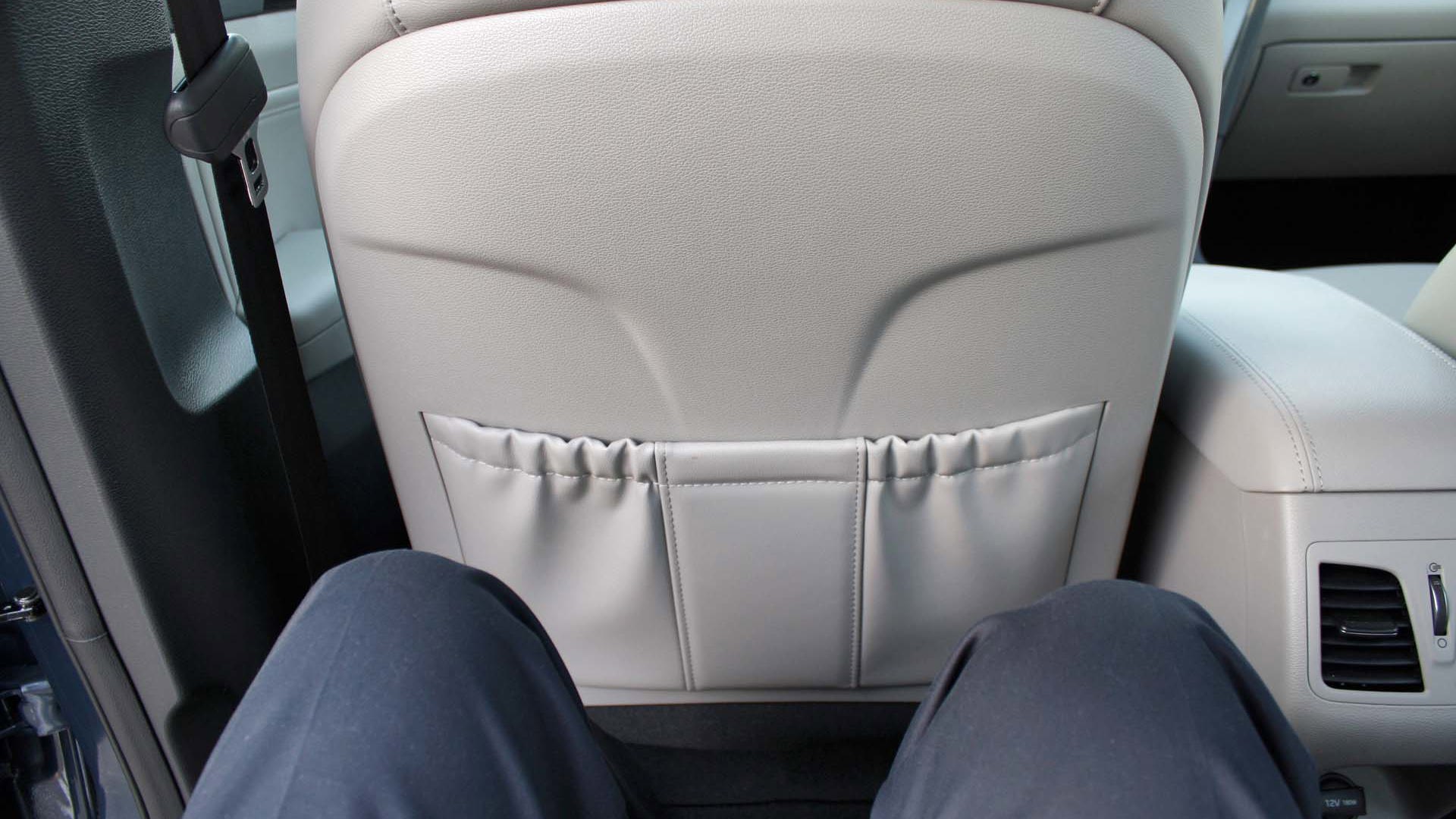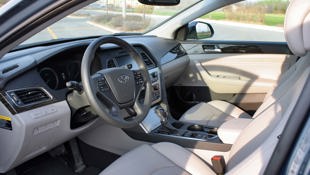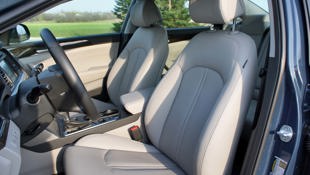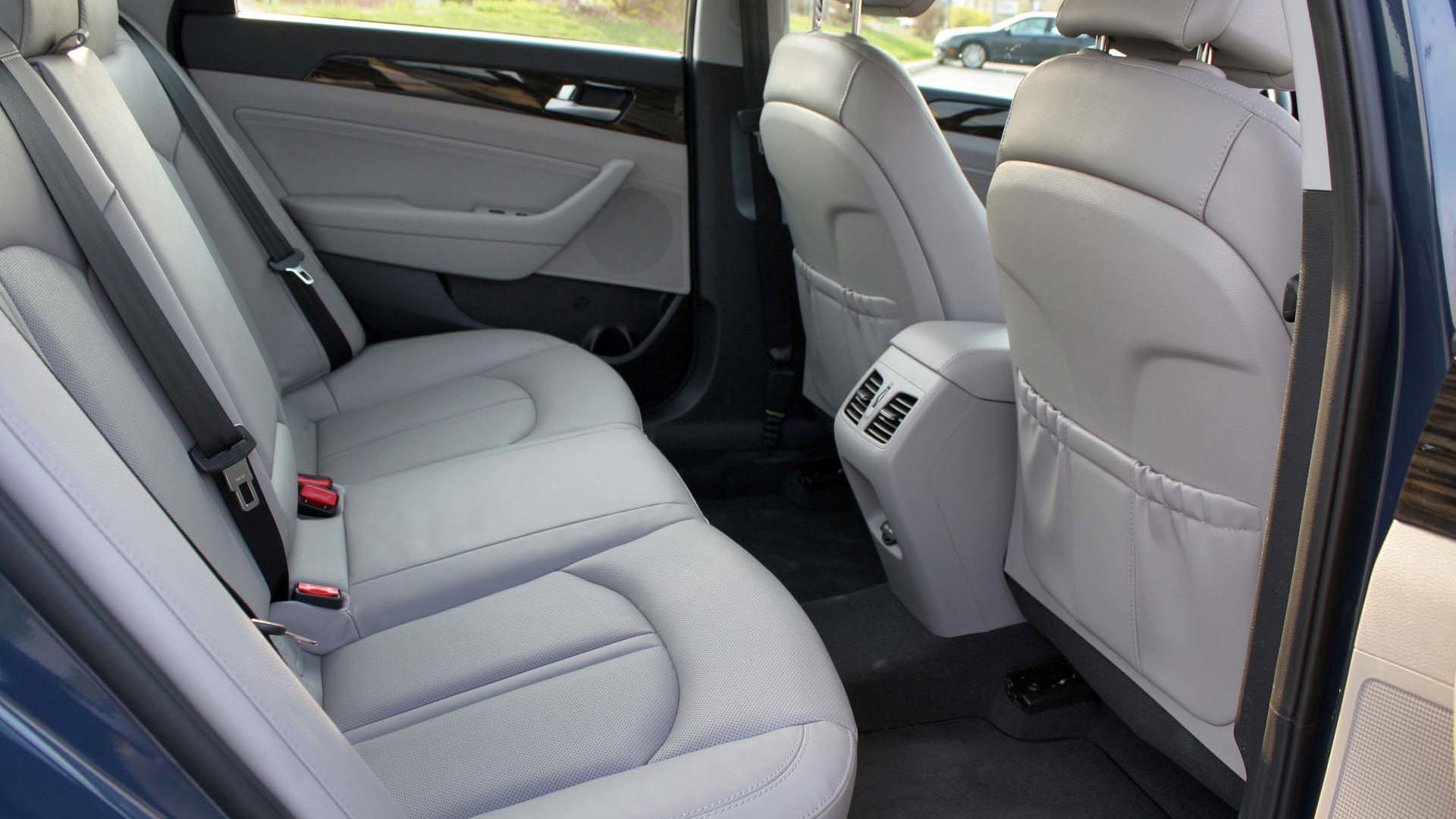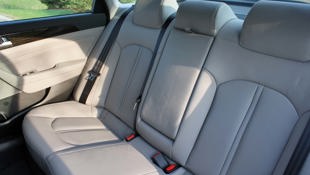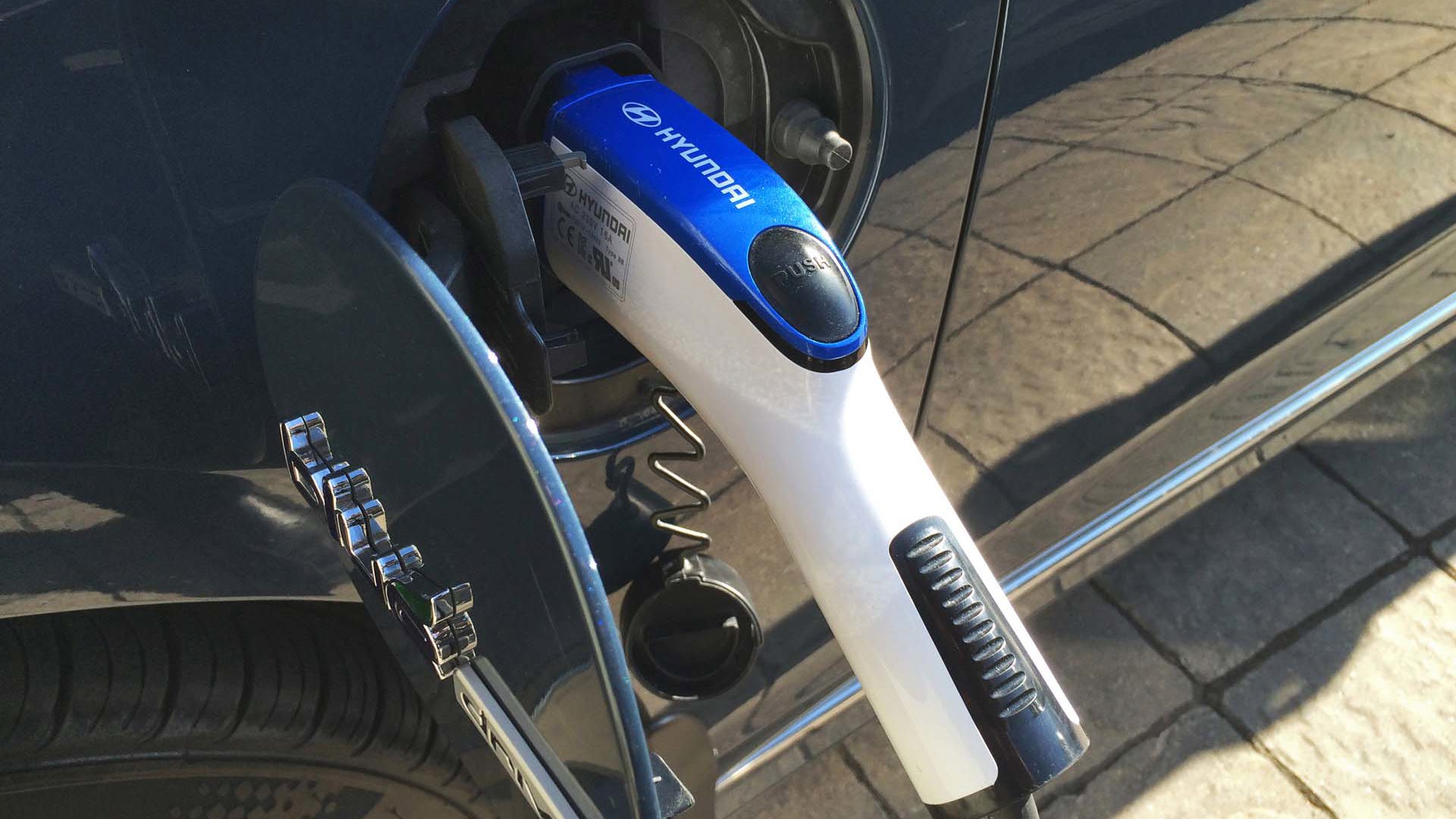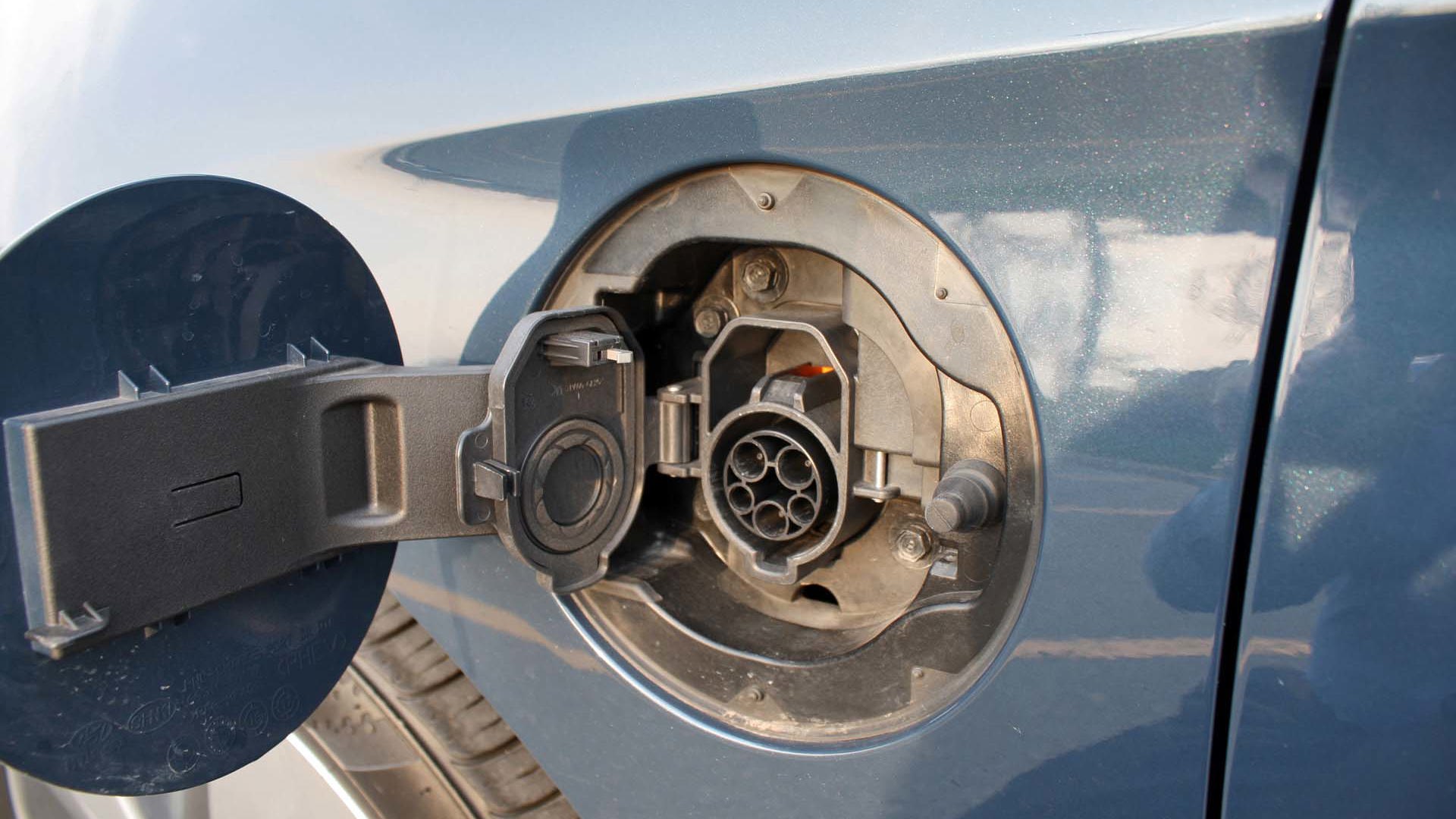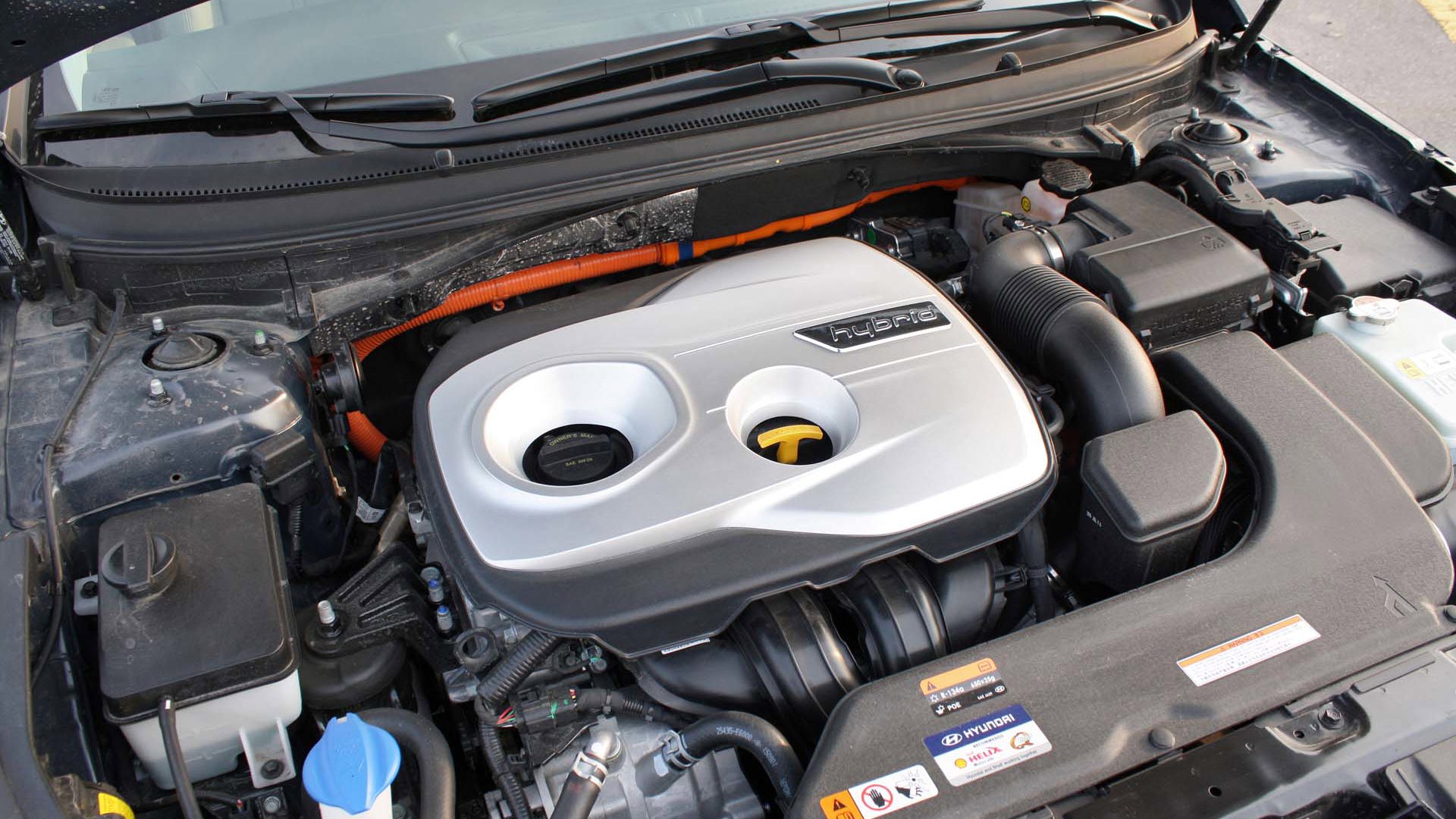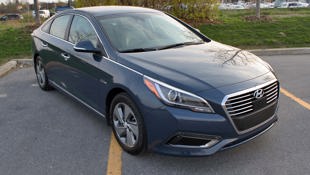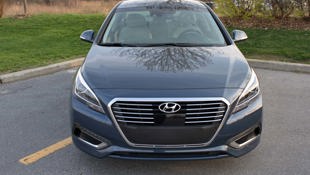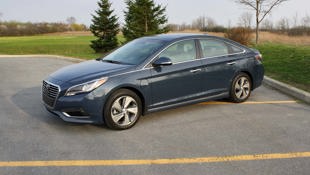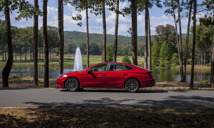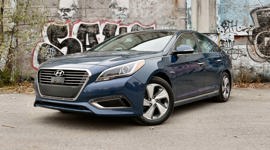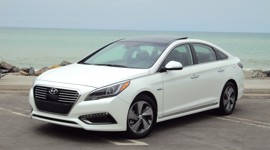What does a Charger Daytona, Lancia Delta HF Integrale and Hyundai Sonata PHEV all have in common? They are all homologation specials, cars whose special nature have raised the eyebrows of car nuts all over the world. While the first two were spawned by racing rulebooks, this week’s plug-in hybrid tester comes to us thanks to the zero-emission laws that are in effect in ten American states: California, Oregon, Connecticut, Maryland, Massachusetts, New York, New Jersey, Rhode Island, Maine and Vermont.
Kudos to Hyundai for offering us what is not only a PHEV that is very well integrated to its platform, but a drop-the-mike, knock-it-out-of-the-park, catch-some-net stellar plug-in hybrid, based on its electric-only range in the real world.
To be allowed to sell cars in those states, manufacturers must earn credits by offering clean, alternative-fuel options, usually battery-electric vehicles (BEV). Plug-in hybrids like this Sonata are also allowed under this rule as “transitional zero-emission vehicles”, provided their battery is of a sufficient capacity. Since Canada doesn’t enforce any zero-emission laws up here, it’s easy to judge how committed manufacturers are with their “homologation specials”, or how much red ink each one sold adds to their bottom line. Ever noticed we’re not getting the Fiat 500E, Mercedes-Benz B-Class Electric Drive or VW e-Golf? Kudos to Hyundai for offering us what is not only a PHEV that is very well integrated to its platform, but a drop-the-mike, knock-it-out-of-the-park, catch-some-net stellar plug-in hybrid, based on its electric-only range in the real world. Before you think I overindulged in Psy videos or suffered from the highly chemical new-car smell so typical of Hyundais, please read on.
The current generation of the Sonata launched for the 2015 model year wearing clean, crisp and, dare I say, conservative lines, doing away with Hyundai’s voluptuous “fluidic sculpture” design language (the new corporate look is actually called “fluidic sculpture 2.0”). After a successful seduction game that won it a significant chunk of the mid-size sedan market, the new Sonata effectively hid its curvy bod under a business shirt and went all serious on us, as if to prove she’s in it for the long haul, and not a mere fling. The Hybrid variant kept the curves for an extra model year, after receiving a significant upgrade of its hybrid hardware for 2013. As the Korean giant’s first electrified effort, the Sonata Hybrid had one signature feature that differentiated it from the green herd: its conventional six-speed automatic transmission. While all other mass-market hybrids use a CVT (save platform-mate Kia Optima Hybrid), Hyundai’s choice was budget-minded; the manufacturer developed its hybrid propulsion system in-house, as opposed to licensing Toyota technology like Ford did. While it did not make for the smoothest or most frugal hybrid back at launch, improvements made during the model’s cycle brought improvements to both driveability and fuel economy ratings.
See also: Hyundai Launches its New Ioniq Hybrids and EV at New York Auto Show
While that previous car was granted an extended stay for a partial 2015 model year, Hyundai took advantage of those extra months to come up with a 2016 2.0 Sonata Hybrid based on the new generation, and adding its first ever plug-in hybrid, this week’s Sonata Hybrid PHEV. In the spirit of the aforementioned Charger Daytona, both hybrids feature aerodynamic tweaking that yield a class-leading drag coefficient of 0.24. The slippery grille is better integrated than on the previous generation, and other surface details like the wheel design and subtle deck-lid spoiler help reduce air friction. The end result is akin to a wet-sanded Sonata, slippery without undue bizarreness (…cough-cough, new Prius). But the really interesting evolution is found under the skin, thanks to a complete redesign of the hybrid package.
At the heart of it is a new direct-injected 2.0L “Nu” four cylinder engine, good for 154 hp and 140 lb-ft of torque, mated to a 50 kW electric motor (the regular hybrid gets a less powerful 38 kW electric motor). Combined output maxes out at 202 hp at 6,000 rpm in the Sonata PHEV, nine more than the plain-Jane Hybrid. The new lithium-polymer battery claims higher energy density, more thermal stability and durability than class-typical lithium-ion battery packs; what’s certain is that they are smaller and more expensive to manufacture than Li-ion. This state-of-the-EV-art energy source packs 9.8 kWh in the Sonata PHEV, giving the car a class-leading 43 km all-electric range without taking up most of the trunk. The battery can be fully replenished in three hours on a 240V charging station, or in nine hours on a domestic plug with the included adaptor. Unique to this category, the Sonata PHEV can be manually placed in HEV mode to activate the gas engine and recharge the battery on the go (left to its own devices, the car will feed from the battery until depleted before reverting to classic hybrid mode). The six-speed automatic transmission is back, incorporating the aforementioned electric propulsion motor. Refinement and shift quality of this box has been improved thanks to the addition of an electric hydraulic pump and liquid cooling. In the interest of science, I can attest the Sonata PHEV will sustain 125 km/h on the highway in full EV mode; in the interest of my driver’s licence, I don’t actually know how fast it’ll go on electrons alone. The interaction of all these systems feels very refined, which bodes well for the upcoming Hyundai Ioniq.
While a basic Sonata Hybrid is priced at $29,649, the PHEV Ultimate tops out the model range at $43,999. For an apple-to-apple comparison, the plug-in hardware adds $6,500 to the price of a Sonata Hybrid Ultimate. The only option available is the special “3D Blue” inlay that replaces the wood-grain trim and it comes at no cost. The PHEV is a special-order car in Canada; dealers can keep some in inventory, but they are not mandated to do so by Hyundai. With seven available paint colours and three for the leather, chances are you won’t see two identical ones at the local charging facility. In Ontario, the Sonata PHEV is eligible to a $8,460 provincial government rebate, while it’s $4,000 in Quebec and $2,500 in British Columbia. All government rebates apply to the total sales price after taxes, no surprise there. At the time of this writing, Hyundai also offers a “purchase adjustment” rebate of $3,032.
An airport pick-up proved that two full-size suitcases will fit lengthwise in the Sonata without a hitch.
In the trunk you will also find an air compressor kit (but no spare tire) and a Velcro-backed pack to store the 120V charging device, which I used all week long. Similar to other manufacturers’, it includes a standard three-prong plug at one end and an SAE J1772 EV charging nozzle at the other, with an in-line device whose lights show you the charging status. Hyundai is taking no chances with the safety of the charging portal on the car; on top of the gas-flap like cover, the standard SAE portal features another hinged cap to ensure complete weather protection.
Once charging is established and the vehicle locked, the Sonata also locks the charging nozzle to the car, so pranksters can’t unplug you during the nine hours or so needed for a full 120V charge (a brilliant idea – Ford’s nozzle requires a small padlock). A green light located in the middle of the dashboard’s top cover stays lit during charging, so it’s easy to check on the car’s status with a quick glance through the windshield.
So, how does it drive?
Leaving the Hyundai dealership with a 40 km EV budget shown on the trip computer display, I arrived to work with 30 km left … after a 17 km drive. An over-achieving plug-in? I knew right then that this would be an interesting week. Impressions on that first drive bode well for what was to follow. Hold the brake pedal, press the start button and select “D”. The car releases the electric parking brake by itself, an interesting touch that other manufacturers could follow.
I silently motored onto the Metropolitan highway, where all the “driver aids” immediately went berserk, sensing impending doom. Relax microchips, you’re in Montreal. Since all “smart” vehicles I drive do the same, I quickly found the buttons to deactivate the lane departure warning and blind-spot warning just to the left, above my knee. Coming right out of another electric car, feeling the transmission changing gears on electric power felt odd at first, but the hardware upgrades work and the shifts are smooth.
Truth is, this setup felt more natural than the CVT in Ford’s plug-ins, especially on the rare occasions the 2.0L engine came on. The transmission allows for the familiar “direct drive” of regular cars, unlike the CVT-induced disconnected generator feel of the Ford plug-ins. Another major difference with the Fords is that the Sonata PHEV is no slug in EV mode, even with “Eco” mode activated. The car will accelerate with traffic and will not become a hypermiling road block. Prodding the throttle harder will turn on the 2.0L with no drama or undue vibration or jerkiness, acceleration becoming class-competitive. The typical high-torque feel that comes behind the wheel of an EV is right there at your fingertip, by using the “Mode” button behind the shifter to turn off Eco.
Maybe driving an EV for a whole week got me used to regenerative brakes, but it seemed to me that brake feel here was natural, with progressive pedal travel and none of that “regen” hypersensitivity. Steering feel and heft are also much improved, even though you won’t be chasing any apexes while sipping electrons. You’re in business class, remember?
Soundproofing is one area where more effort could be directed. Maybe it’s just the missing “white noise” when running in EV mode, but my built-in sound meters kept telling my left hand to check if all windows were up; oddly, even though internal combustion engines are pretty quiet at cruising speeds these days, the silent running that comes with electric propulsion seems to amplify outside noise. I don’t have scientific proof, but I’d swear the previous week’s Focus EV was more hushed inside despite its economy-class roots. The Sonata PHEV is shod with 215/55R17 Kumho Solus TA31 all-seasons, tires that I thought at first to be of the run-flat type, given the fact that the car comes with a tire inflator kit instead of a spare (the spare-tire well is used in part by hybrid system componentry). Because a plug-in runs on EV power a lot, tire noise is more easily noticed and I found the Kumhos to be a bit loud, more so than the 225/50R17 Michelins that were under my Focus EV tester.
The narrow sidewalls of the Kumhos also transmitted impact harshness to the cabin, this despite the fairly soft suspension settings doing their best to coddle the humans on board. On smooth pavement (yes, we do have some in Quebec), the Sonata PHEV feels like a business jet, with high comfort and excellent straight-line tracking. Surface undulations or poorly maintained train track crossings, however, bring Hyundai’s classic skeletons out of the closet, with suspension rebounds raising driver eyebrows and shaving down confidence. There is still room for improvement here.
And how does all that technology translate into the real world? It’s time for that drop-the-mike moment. I left the car mostly in Eco mode all week long, except for a few un-eco moments to properly review acceleration. I also plugged the car in 120V outlets at the end of every trip, my standard commute being around 50 km round-trip. The relatively small battery (as opposed to a full-on EV’s) charges up fast enough on 120V to allow mid-day trips on electric power alone. For example: starting with a 39 km budget in the morning, I drove 25 km to work, plugged in at a 20 amp 120V outlet for 90 minutes, drove a 25 km return trip to a meeting in full EV mode (no charging at destination), plugged back in at work and drove home in the evening, all on electric power. Another mid-day meeting allowed me to use a premium parking space with a public 240V charging station, where I filled up for $2.50.
I did use the gas engine on a return trip to the airport, a distance that’s double the EV range of the Sonata PHEV. I overrode the systems by manually using the HEV mode to replenish the battery while on the highway, and save some electrons for the surface streets. The engine did come on in a supporting role at a few times during the week, to enable quick freeway merges or to supply heat to the cabin. At the end of my week, I had covered exactly 400 km with the car, and performed the routine fill-up near the press vehicle drop-off.
I always make sure the next driver starts their week on a full tank. How much fuel did I put in? 4.1L. That’s 1.025 L/100 km according to my calculator, or 230 mpg for our American friends. Thunk.
Warranty: 5 years/100,000 km; 5 years/100,000 km powertrain; 5 years/unlimited distance corrosion perforation; 5 years/unlimited distance roadside assistance; 8 years/160,000 km hybrid componentsCompetitors:
Ford Fusion Energi
Kia Optima PHEV (upcoming)
| Model Tested | 2016 Hyundai Sonata PHEV Ultimate |
|---|---|
| Base Price | $43,999 |
| A/C Tax | $100 |
| Destination Fee | $1,795 |
| Price as Tested | $45,894 (provincial rebates not included) |
|
Optional Equipment
None
|
|



